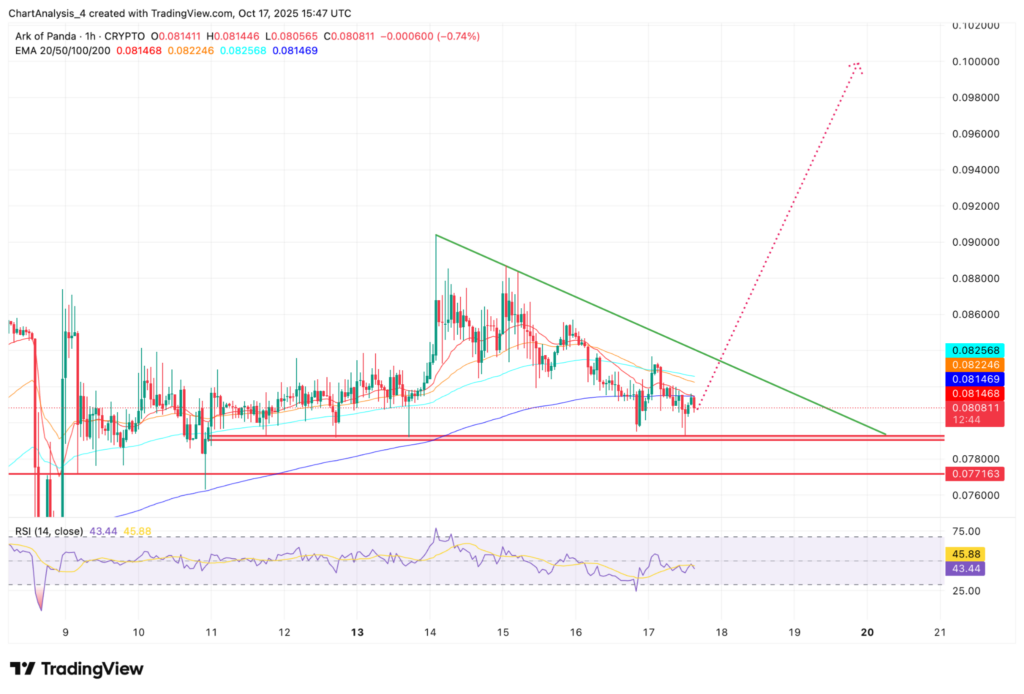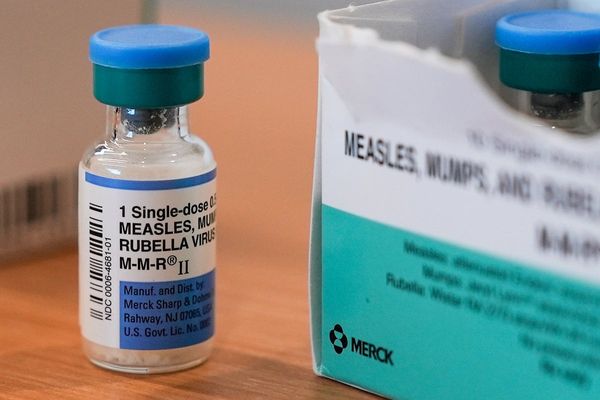
Dogecoin (CRYPTO: DOGE) and Shiba Inu (CRYPTO: SHIB) are fading in momentum, while a little-known meme coin called Ark of Panda (AOP) is seizing the spotlight with surging Binance Alpha volume and a breakout setup that traders say could fuel a 300% run.
Chart Signals Point To Explosive Breakout

AOP 300% Moonlight Potential (Source: TradingView)
On the hourly chart, AOP is consolidating inside a descending resistance structure while holding firm above its $0.078–$0.077 liquidity base.
The token trades near $0.08, pressing against the downtrend line, with resistance between $0.0825–$0.0830.
RSI has stabilized around 45, while the major EMAs are tightly clustered near $0.081–$0.082, signaling compression ahead of a volatility breakout.
A confirmed move above $0.083 could open a path toward $0.10, followed by possible extensions to $0.15 and $0.20 — a move that would represent a potential 300% rise.
Failure to defend the $0.077 base, however, could expose deeper liquidity zones near $0.074.
Binance Alpha Incentives Trigger $5.8 Billion AOP Volume Surge
AOP's 24-hour trading volume surpassed $5.8 billion on Binance Alpha, accounting for roughly 70% of total exchange turnover.
The spike coincided with Binance's short-term incentive program rewarding users with leaderboard points for high-frequency trades and limit order volume.
Quadruple point multipliers for certain order types encouraged rapid turnover, creating a feedback loop that inflated activity.
Analysts caution that while the incentives boosted reported liquidity, they may not reflect sustained demand once the campaign ends.
Whale Supply Concentration Could Spark Violent AOP Price Swings
Only 300 million tokens are currently in circulation from a 2 billion total supply as per CoinMarketCap.
Concentrated ownership increases volatility potential, with a small number of large holders able to influence short-term price moves.
This thin market structure means even modest selling could trigger outsized corrections, particularly if exchange activity cools once incentive-driven demand fades.
Read next:
Image: Shutterstock







